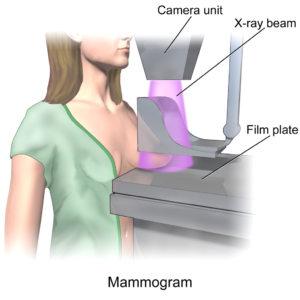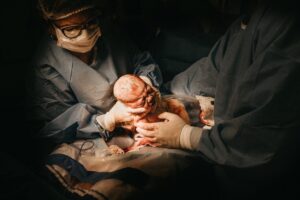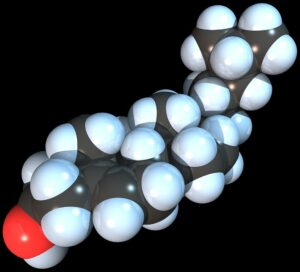Non-Alcoholic Fatty Liver- A Lifestyle Disorder Suffered By Millions Throughout The World

Micrograph of non-alcoholic fatty liver disease (NAFLD). Masson's trichrome & Verhoeff stain. The liver has a prominent (centrilobular) macrovesicular steatosis (white/clear round/oval spaces) and mild fibrosis (green). The hepatocytes stain red. Macrovesicular steatosis is lipid accumulation that is so large it distorts the cell's nucleus.
By neucrad health’s own news desk March 23, 2019
Nowadays, liver disease is a new menace to society. Whenever you go to any public functions or gathering, you would see people being extra cautious about their food so that they do not develop any complexities in their liver. You get to know many of your acquaintances are experiencing fatty liver disease or hepatic steatosis. It is a potentially dangerous medical condition where patients undergo extra fat deposition in their liver cells.
The liver is one of the most vital organs of the human body concerned with detoxification of all food items consumed regularly. It also secretes bile and synthesis of a protein involved with clotting of blood. Hepatologists diagnose the early stage of fatty liver when individuals have more than 5 percent of fat in their liver cells. Though this medical condition is reversible in early stages by life-style rectification like weight loss, exercise, and dietary changes, in the advanced stage it may lead to permanent scarring of liver or even liver cancer.
What are the Different Sub-Types of Fatty Liver Disease?
Fatty liver is broadly classified under two heads- non-alcoholic fatty liver disease (NAFLD) and alcoholic fatty liver disease (ALD). NAFLD, as the name suggests, is a complicated liver condition which is not related to alcohol consumption. Though it can occur at any age, individuals in the age group 40 to 50 are more susceptible to this condition. NAFLD is again sub-divided into the simple fatty liver (here patients have excess fat in liver cell without any inflammation or damage to the organ) and Nonalcoholic steatohepatitis or NASH (a more complicated form of NAFLD where inflammation is present in the liver which can further lead to scarring, cirrhosis, or even liver cancer). Approximately 20 percent of patients having NAFLD show symptoms of NASH.
Alcohol-related fatty liver disease (ALD) is a more complicated form of fatty liver disease. In the beginning, there are no profound symptoms of this ailment; however as the liver gets inflamed patients experience pain and discomfort in the upper right side of the abdomen. One must also remember in spite of being a severe medical condition, ALD is preventable and symptoms get much better with abstinence from alcohol. It is again of two sub-types- alcoholic hepatitis (swelling in the liver leading to jaundice or yellowing of skin and eyes due to increases in bilirubin level in the body) and alcoholic cirrhosis (scarring of liver tissue leading to an excess fluid build-up in abdomen or ascites and enlarged spleen). In the advanced stage, it leads to liver failure.
Since the fatty liver disease is a broad subject, in this article, we will primarily focus on NAFLD.
Symptoms of NAFLD
Detailed below are some of the signs noticed in individuals having simple NAFLD.
- ∙ Enlarged liver
- ∙ Tiredness and fatigue
- ∙ Discomfort and pain in the right side of the upper abdomen.
Symptoms become profound in nonalcoholic steatohepatitis and cirrhosis. Here are some of the prominent ones noticed in NASH.
- ∙ Ascites or collection of fluid in the abdomen
- ∙ Swelling of blood vessels below the epidermis
- ∙ Splenomegaly (enlargement of the spleen)
- ∙ Hepatitis or jaundice where bilirubin level increases and eyes and skin turns yellow
What are the Risk Factors of NAFLD?
Chances of developing NAFLD increases manifold when individuals show the presence of certain factors like obesity, insulin resistance (cells cannot absorb glucose even in the presence of insulin hormone), prediabetic, type 2 diabetic patients, hypothyroidism, polycystic ovary syndrome, sleep apnea, hypopituitarism, and high cholesterol.
What are the possible complications of NAFLD?
If NAFLD is left uncontrolled and untreated, it may further lead to oesophageal varices (swelling of veins around the food pipe or oesophagus which can rupture and cause heavy bleeding), hepatic encephalopathy, end-stage liver failure, or even liver cancer.
How do Hepatologists diagnose NAFLD?
Hepatologists usually conduct a thorough physical examination when they notice signs of NAFLD from the health history of patients. After this, he prescribes some blood test for ALT (alanine aminotransferase) and AST (aspartate aminotransferase). If the levels of these two liver enzymes are found high, physicians recommend other imaging tests like CT (computerised tomography) scans, MRI (magnetic resonance imaging), or even liver biopsy for a conclusive diagnosis of NAFLD.
What are the Treatments for NAFLD?
Till now there is no medical board approved medications for NAFLD. Hepatologists advocates specific lifestyle changes like losing weight, exercise, dietary restrictions to bring down cholesterols for managing NAFLD.
Finally, one should remember that NAFLD is preventable to a large extent by living a healthy life. So, exercise daily and maintain a healthy diet to keep this complicated liver disease at bay.
Image credit: By Nephron – Own work, CC BY-SA 3.0, https://commons.wikimedia.org/w/index.php?curid=7612867








